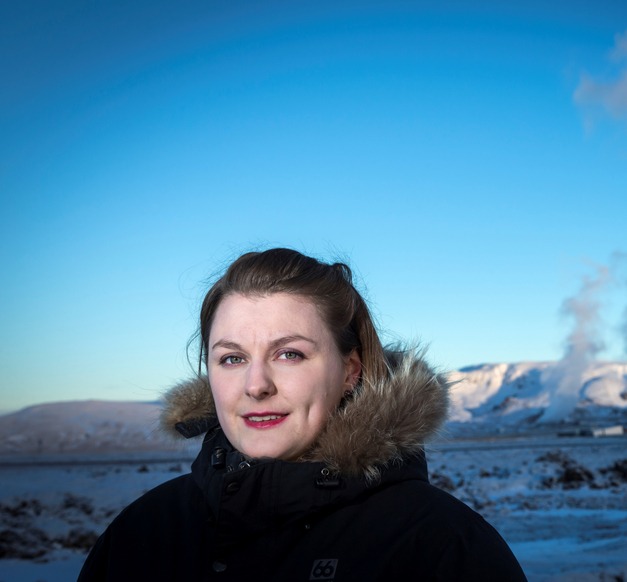Sandra Ósk Snæbjörnsdóttir, a doctoral student at the Faculty of Earth Sciences
"Climate change is one of the biggest threat of our times and we have to react against the elevated strength of carbon dioxide in the atmosphere any way we can. Sequestering carbon dioxide in basalt is one of the methods we could use in this battle," says Sandra Ósk Snæbjörnsdóttir, a doctoral student in geology, who wants to contribute in the fight against climate change via a world-renowned project.
"My doctoral project is part of the CarbFix project launched in 2007 by the University of Iceland, OR group, CNRS ín Toulouse, and Columbia University in New York. The aim of CarbFix is to find a way to sequester carbon dioxide in the deep basalts in order to reduce its effect in the atmosphere," she explains.
Sandra Ósk Snæbjörnsdóttir
Sandra's doctoral research focuses on the potential sequestering of carbon dioxide in basalt.

Sandra says she has always been interested in nature and environmental issues and that the CarbFix project had fascinated her from the beginning. "A few years after the project had begun I was looking for a change and around that time there was an ad for doctoral students for the project so I decided to go for it," she says on how she became a part of this project.
Sandra's doctoral research focuses on the potential sequestering of carbon dioxide in basalt. "On one hand I have evaluated how much carbon dioxide it is theoretically possible to sequester, both in Iceland but also in the oceanic ridges - but the largest parts of basalt on the Earth is at the bottom of the sea. On the other hand, I have defined the process that occurs during the first pumping experiment in Hellisheiði Plant by using chemical analysis and probability calculation. This includes how much of the carbon dioxide combined with water had sequestered into minerals, but also what minerals are formed in different circumstances," says Sandra.
The first results of the CarbFix project are very promising. They show that most of the carbon dioxide pumped into the ground by Hellisheiði Plant is sequestered into minerals within two years, not thousands of years as previously thought. The results were published in Science magazine in the summer of 2016, but Sandra was one of the co-authors of the article. The results have attracted a great deal of attention as it gives hope that the project will eventually become a useful tool in the battle against climate change.
"The current results exceeded our greatest expectations, a clear sign of the project's success is how it went from being an idea to full application in Hellisheiði Plant in less than a decade," says Sandra.
Supervisor: Sigurður Reynir Gíslason, a research scientist at the University of Iceland's Institute of Earth Sciences.


